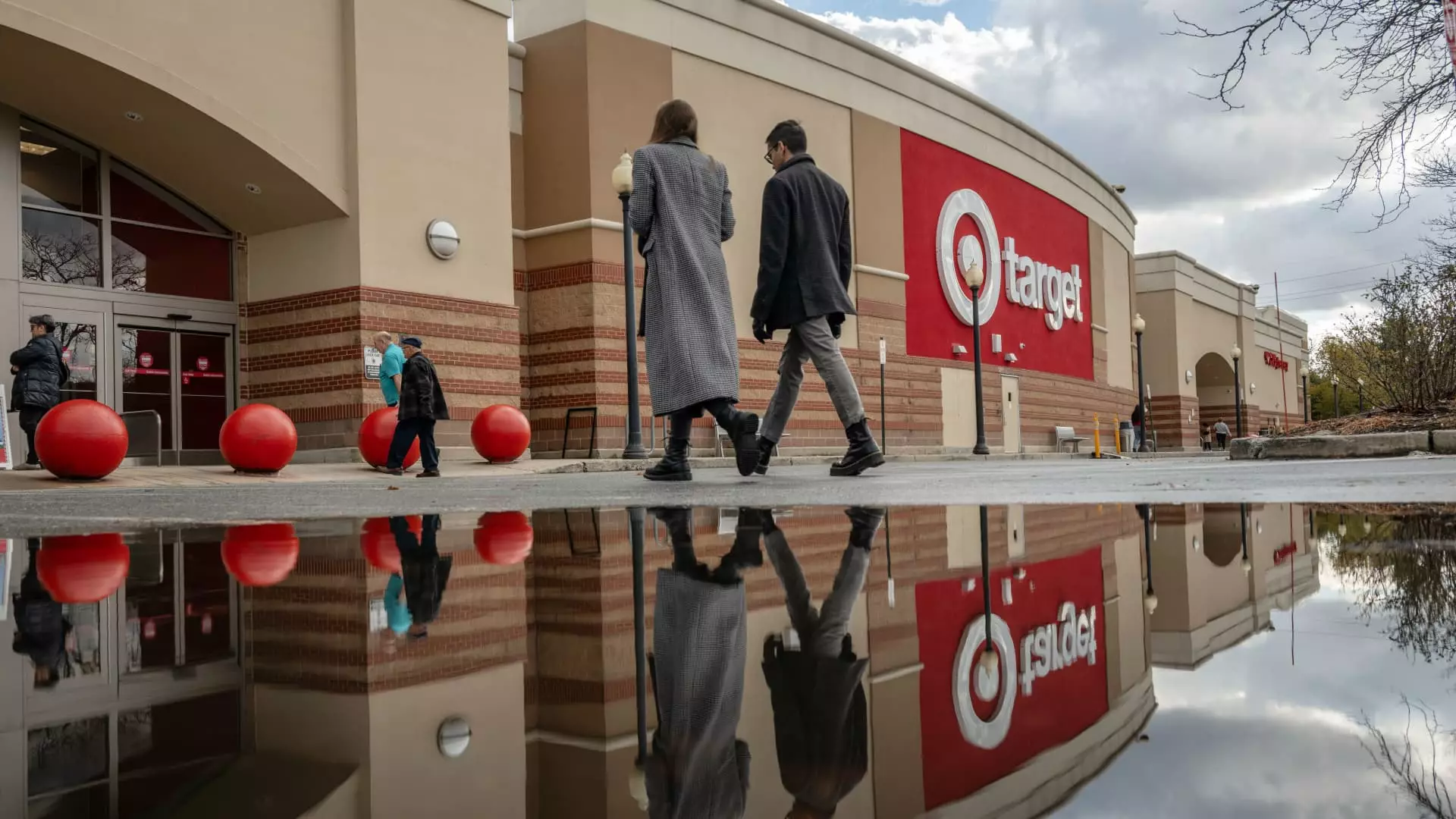As the holiday shopping season unfolds each year, a complex interplay of consumer behavior and economic indicators shapes the retail landscape. This year, retailers are presented with a challenging yet promising opportunity to entice shoppers to spend on non-essential items such as holiday clothing, gifts, and beauty products. However, the enthusiasm is not universal; a stark contrast has emerged between companies thriving in this season of giving and those struggling to attract customers. Recent financial reports reveal a divide between successful retailers and those experiencing declines, painting a picture of a cautious consumer base still grappling with the aftermath of economic instability.
The latest financial disclosures from major retailers show a clear schism in performance. On one hand, industry leaders such as Walmart, Dick’s Sporting Goods, and Abercrombie & Fitch report robust sales growth, buoyed by effective marketing strategies and a keen understanding of consumer desires. These brands have not only withstood economic pressures but thrived amidst them, showcasing their ability to cater to customer preferences with relevant and attractive product selections.
Conversely, retailers like Target and Kohl’s have reported disappointing figures, with both companies struggling to gain traction in what should be a lucrative season. These mid-range retailers face an uphill battle as they grapple with declining consumer interest, evidenced by a lackluster response to early holiday promotions. Analysts suggest that inflationary concerns continue to play a significant role in consumers’ shopping choices, fostering an environment where selective purchasing behavior reigns supreme. This trend underscores a troubling reality: as financial pressures persist, many consumers are instinctively opting to forgo purchases from brands they perceive as less essential.
Understanding the psyche of today’s shoppers reveals critical insights into the current holiday season. A significant factor influencing buying behavior is the effect of prolonged inflation in the U.S., which has made many consumers wary of opening their wallets. As Neil Saunders from GlobalData Retail articulates, consumers are now prioritizing essential needs over ‘wants,’ leading to fewer items being added to shopping carts. Instead of buying multiple items, many are consolidating their purchases, discerningly selecting only those products they deem necessary or valuable.
Furthermore, as the holiday season advances, predictions suggest a modest increase in holiday spending—ranging from 2.5% to 3.5%—compared to last year’s growth. Such projections indicate that while the appetite for holiday shopping remains, the willingness to splurge on less meaningful gifts is diminishing. Retailers must now navigate this landscape carefully to attract shoppers who are more focused on value and practical benefits.
In light of these challenges, retailers are reevaluating their strategies to engage potential customers. For instance, Target is attempting to draw interest through exclusive product launches inspired by popular culture, such as merchandise tied to the blockbuster movie “Wicked.” Such strategies reflect an understanding that in a competitive environment, differentiation is key to capturing the attention of a discerning clientele.
However, not all retail strategies appear to be well-founded. Some analysts caution that an oversupply of less desirable inventory may plague companies like Kohl’s, leading to further sales declines if they fail to ignite consumer interest. The challenge remains for many retailers to discern what products will resonate with their customer base and align their offerings accordingly.
Moreover, consumers this season seem to prioritize gifts with practical utility over novelty items. This shift in values can result in significant changes to how retailers approach holiday merchandising. A greater emphasis on quality and value, as suggested by market research firm Circana, indicates that consumers will gravitate towards purchases which reflect their desire for meaningful engagement rather than superficial indulgences.
Retail analysts stress the need for brands to adapt swiftly, responding to these evolving consumer expectations. The challenge lies not just in price competitiveness but in enhancing the perceived value of products, ensuring that every item sold resonates with its intended consumer.
As we approach the peak of the holiday shopping season, the landscape is far from predictable. While some retailers align their strategies to leverage consumer sentiments effectively, others may find themselves struggling against an unforgiving market. The impending weeks will be crucial for assessing whether retailers can turn cautious consumer interest into robust holiday sales. Ultimately, the combination of strategic agility and acute awareness of consumer mindsets will dictate which brands emerge victorious in this festive yet treacherous terrain. Only time will tell if the holiday spirit can spur renewed spending, or if retailers will find themselves grappling with unmet expectations and declining sales figures.

Leave a Reply